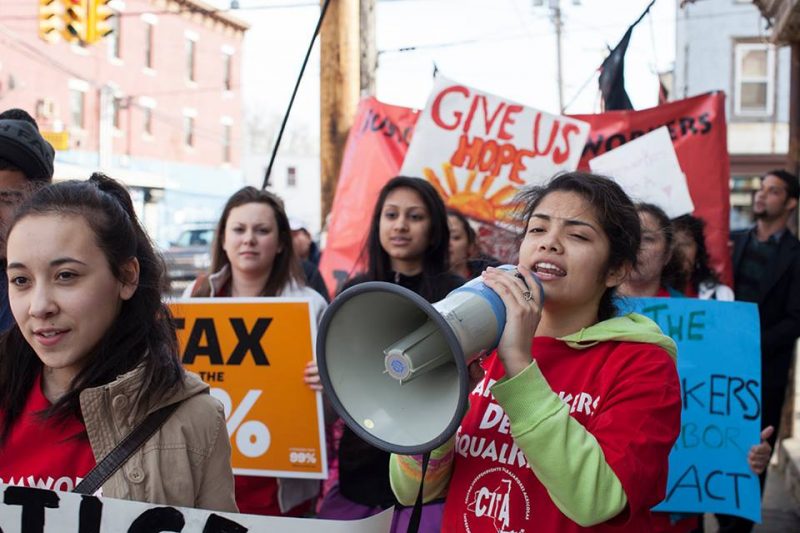Why the presidential election matters for immigrant students
DACA and deportations aren’t the only issues on the line

Kemberly Gil, a DACA recipient, DREAMer and college student rallies for immigrant rights in a 2014 protest in New York. Photo: U. Roberto Romano, courtesy of Rural & Migrant Ministry
mberly Gil came to the United States from Colombia when she was 3 years old. She was with her parents, her older brother, and her younger sister. Like most undocumented immigrants in this country, Gil and her family crossed the border legally — on a tourist visa. After six months, however, the visa expired, and they lost their right to stay.
That was in 1999.
The family has lived in New York state since they arrived in the U.S. and, while Gil’s parents were always honest with her about the fact that she was undocumented, it wasn’t until she attended an immigrant’s rights rally when she was in fourth grade that she realized being undocumented was a problem, and one that affected a lot of people. Though she was only a child, she volunteered to speak to the crowd, calling on lawmakers to understand undocumented immigrants are people, too.
“I remember that I cried that day,” Gil said. “But no one heard me. The people there heard me, but the people who make decisions … nothing happened.”
Then, in the summer of 2012 President Barack Obama announced the Deferred Action for Childhood Arrivals (DACA) program, which he created by executive order. Gil and her siblings became eligible for driver’s licenses, work permits and protection from deportation for two-year, renewable terms.
The federal government approved 819,512 DACA requests from the program’s inception through March 31, 2016. An additional 539,000 people have renewed their original two-year reprieves.
But this fall, the presidential election could mean the end of DACA. Donald Trump has not only promised to build a wall between the U.S. and Mexico, the Republican presidential candidate has said he would also eliminate the program. It is, perhaps, the most prominent immigration policy at stake when Americans go to the polls. And that’s not the only way a Trump administration could affect the lives of one of the fastest-growing populations in U.S. schools. In fact, the contrast between two presidential candidates on immigration policy has quite possibly never been so stark.
Immigrants have grown from just 4.7 percent of the U.S. population in 1970 to an estimated 13.3 percent in 2014, according to Census data, and the number of immigrant students has grown accordingly. Both the actions and the possible inaction of the next president will have far-reaching consequences on these students in U.S. schools.
The next president will have a say in how unaccompanied minors are treated once they get to this country, how the federal government handles deportation or combats civil rights violations against immigrant students, and how much federal funding will be given to support 4.5 million English language learners — a growing portion of Why the presidential election matters for immigrant students:
